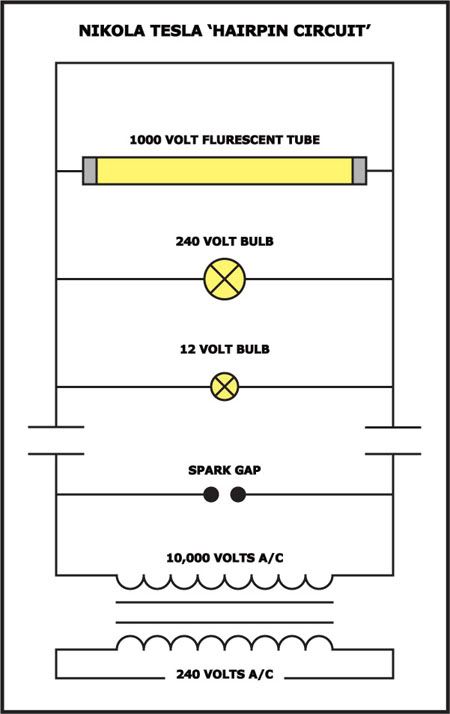I had been thinking along a similar lines since watching this video.
Tesla's Little Secret - YouTube
Matt Blythe in the video has never actually made the device, just dreamt is up.
It needs a voltage regulator too, thats where I lean on someone more competant than me.
I try not to use 100% of my time, it is much more efficient to use 1% of 100 peoples time.
This is why together we will be sucessful.
For a while I wanted to buy Tesla Coils, Plans, Parts, Kits and change the circuit to see what happens.
I now believe that pumping the secondary (which now becomes the primary) with a square wave pulse is possibly the way to go.
If you look at the circuit diagram:

I believe this circuit is the way to create scalar current and gave Tesla the basis for wireless transmission.
Tesla's Little Secret - YouTube
Matt Blythe in the video has never actually made the device, just dreamt is up.
It needs a voltage regulator too, thats where I lean on someone more competant than me.
I try not to use 100% of my time, it is much more efficient to use 1% of 100 peoples time.
This is why together we will be sucessful.
For a while I wanted to buy Tesla Coils, Plans, Parts, Kits and change the circuit to see what happens.
I now believe that pumping the secondary (which now becomes the primary) with a square wave pulse is possibly the way to go.
If you look at the circuit diagram:

I believe this circuit is the way to create scalar current and gave Tesla the basis for wireless transmission.


 BTW This is the method Tesla used, but of course his coils were the size of a room. Anyway, using this method you can find nodes in your circuitry and obtain power by joining two nodes - as the SAAAR team did in the Lithuania experiments.
BTW This is the method Tesla used, but of course his coils were the size of a room. Anyway, using this method you can find nodes in your circuitry and obtain power by joining two nodes - as the SAAAR team did in the Lithuania experiments.
Comment